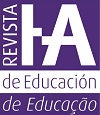Advertising as a school learning tool
DOI:
https://doi.org/10.35362/rie6111275Keywords:
Publicidad, instrumento de aprendizaje, innovación educativa, pensamiento asociativoAbstract
Educational contents have traditionally been a summary of the knowledges that represent the ways culture, thought and mankind beliefs proceed. Thus, the different disciplines were reflected in a number of educational contents which were organized around certain school subjects “locked” in textbooks. This article refers to the convenience of the use of advertising as an educational tool. Considering the high rate of advertising consumption by the students, it is argued the pedagogic and pragmatic implications of the textual operations in which the verbal processes of creating meaning, which will acquire the “shape” of those objectives that will become learning, interact with other iconographic systems of communication. The school, in the XXI century, cannot stay apart from a teaching which is oriented to the development of the students’ communicative competence, since the images are not just a natural reflection of the physical reality but also texts that obey specific enunciation and reception conditions. Images are texts that produce “an effect of reality” on the receivers, so it is desirable that the school enhances them from an early age and teaches how the iconic-verbal uses of communication are articulated. This fact will be able to establish a school knowledge around the images, which is able to revive a competence based on an exact understanding of the visual icon sphere in which the students are daily immersed.
Downloads
How to Cite
Downloads
Published
Issue
Section
License
Any authors who publish with this journal accept the following terms:















